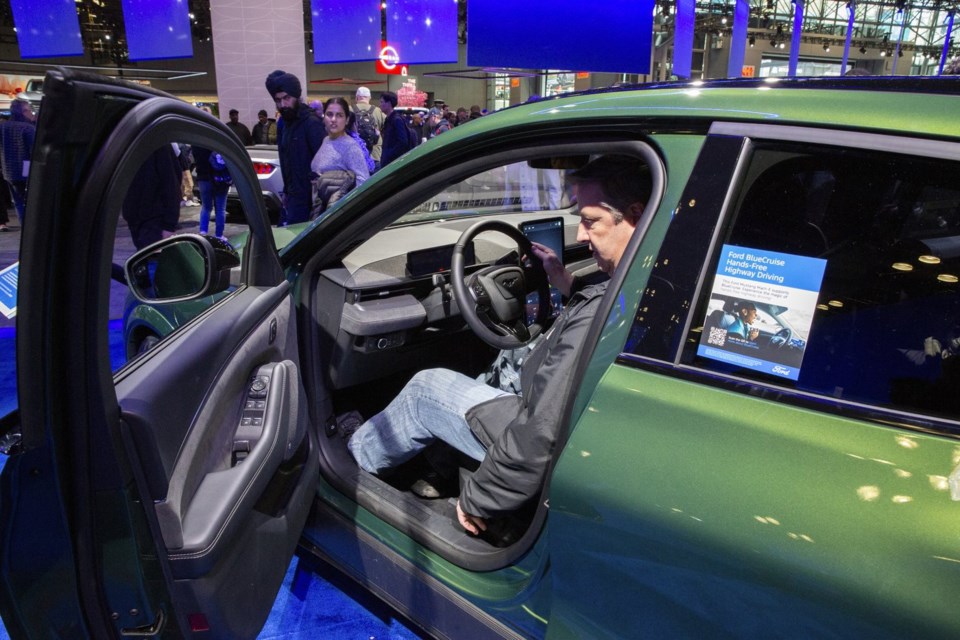Consumers don't want to pay for it. Automakers are still pushing hard.
In-car subscriptions have become a growing obsession for many automakers which see strong revenue potential from recurring customer payments.
But it appears that initial attempts to paywall built-in hardware and software features, such as cameras, sensors or navigation perks, haven't been too successful, with few drivers willing to take on yet another monthly bill. That has brought automakers to their next challenge: convincing customers to subscribe.
An S&P Global Mobility survey this month found the number of respondents who were willing to pay for connected services in their vehicle dropped to 68 per cent this year, compared with 86 per cent in 2024.
"Subscription-based services (navigation, Wi-Fi, etc.) are increasingly being met with resistance from price-sensitive consumers who may not see the value in paying recurring fees for features they do not frequently use," the report said.
Drivers now have a range of options to subscribe to: semi-autonomous driving, roadside assistance, in-vehicle apps, stolen vehicle assistance and access to Wi-Fi — all at different price tiers.
However, steep subscription costs on top of sticker prices of new vehicles remain one of the biggest barriers for many consumers.
To get past that, some automakers are offering temporary complementary access to connective services in hopes of gaining loyal customers.
Ford Motor Co.'s semi-autonomous driving feature costs between $650 and $900 per year after a 90-day free trial, for example. General Motors Co.'s OnStar subscription can be as high as $39.99 a month after a free trial, according to its website.
Automakers which are known for their affordable prices have also joined the race for subscription-based connected services. Kia Corp., for example, has a three-tier subscription offering for owners following a three-year free trial period, which offers services such as a charging station locator, digital key access via smartphone and roadside emergency services.
The subscription model is in its evolution phase, said Stephanie Brinley, associate director of autointelligence at S&P Global Mobility.
"We're trying to figure out what consumers are willing to pay for, how much they're willing to, (and) how they want it bundled," she said.
Despite the initial resistance, automakers haven't given up yet. Instead, they're rolling out brand new technology and features in the hopes of enticing drivers to pay for subscriptions.
"They're pivoting to that new tech," said Daniel Ross, senior manager of industry insights with Canadian Black Book. "It's more on what's new and what they've never had before."
Ross said as newer technology comes out, there will be more opportunities for automakers to release new generations of cars with updated software.
And that's one of the pitches for customers to subscribe, he added.
"If you want that type of technology that's advanced, that's the newest age, that's something you can tell your friends about, this is the way you pay for it," Ross said.
Brinley said automakers are building a road map to help scale this in-car technology and these features to make it more affordable for consumers in the long run — all while keeping personalization at its core.
"Once you have the platform and the service developed, the margin is really high," Brinley said.
"The fact that it's connected is not really the element that consumers get excited about," she said.
"It's what does that connectivity do for you as an owner?"
Some customers may find value in GM's OnStar safety and security package that alerts for help during a crash, while others may subscribe to Ford's self-driving feature for a month-long road trip.
"The appeal of a feature is that it makes driving easier," she said.
Brinley said automakers have started to talk about their revenue expectations from subscription-based services more concretely.
That "means they're making progress," she said.
On recent earnings calls, GM projected revenue from its hands-free feature, Super Cruise, will be more than $200 million in 2025 and is expected to more than double in 2026. Meanwhile, Ford said the number of its vehicles equipped with the hands-free driving feature, BlueCruise, have more than doubled in the last year to just under 700,000 units.
"You can see our relationship with our customers no longer ends the point of sale or financing. We're starting to build lasting relationships and creating new avenues for reoccurring growth at Ford," CEO Jim Farley told analysts during its fourth-quarter earnings call.
Ross said automakers are banking on the trickle-down effect of the connected services subscription.
Often, features first introduced to high-end customers gradually filter their way down to mainstream customers, who are looking for affordable and budget-conscious options, he explained.
Brinley said the subscription model is still in its early stages. As it progresses, so will consumer expectations.
"If you have a car that has some of these features and then you go to buy the next car, you think that it just should be there," Brinley said.
As consumers get more used to connectivity, their expectation of what comes with a vehicle and what they're going to pay will also evolve, she said.
"There's probably going to be a lot of flexibility over time in how people choose to consume that," Brinley said.
This report by The Canadian Press was first published July 25, 2025.
Ritika Dubey, The Canadian Press




